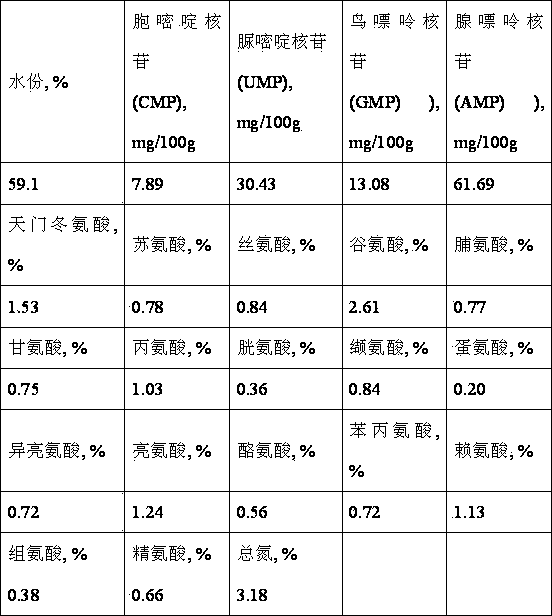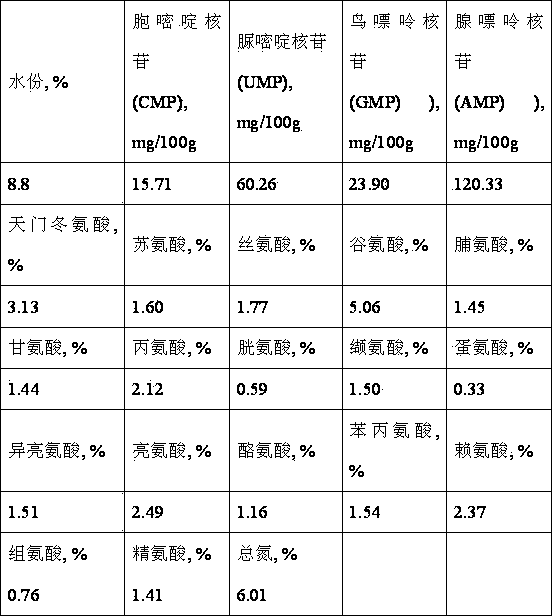Method for producing yeast autolysate by probiotic fermentation
A technology of yeast hydrolyzate and yeast, which is applied in the field of probiotic fermentation to produce yeast hydrolyzate, can solve the problems of large loss of nutrients, influence on enzymatic hydrolysis efficiency, and high requirements for equipment conditions, so as to reduce production costs, have broad application prospects, and break wall effect noticeable effect
- Summary
- Abstract
- Description
- Claims
- Application Information
AI Technical Summary
Problems solved by technology
Method used
Image
Examples
Embodiment 1
[0018] Example 1 Screening of strains using yeast cell walls as nutrients
[0019] 1. Medium
[0020] 1) Solid selective medium: yeast cell wall powder 1% (w / v), yeast extract 0.05% (w / v), ammonium dihydrogen phosphate 0.1% (w / v), ammonium sulfate 0.1% (w / v) , ferric chloride 0.01% (w / v), magnesium sulfate 0.01% (w / v), agar 1% (w / v).
[0021] Weigh the above components in proportion, dissolve them in tap water, adjust the pH value to 6-7, sterilize at 121°C for 20 minutes, and make a solid culture plate for use.
[0022] 2) Liquid selective medium: yeast cell wall powder 1% (w / v), yeast extract 0.05% (w / v), ammonium dihydrogen phosphate 0.1% (w / v), ammonium sulfate 0.1% (w / v) , ferric chloride 0.01% (w / v), magnesium sulfate 0.01% (w / v).
[0023] Weigh the above components in proportion, dissolve them in tap water, adjust the pH value to 6-7, and sterilize at 121°C for 20 minutes.
[0024] ,filter
[0025] Sample: Sludge from the sewage outlet of Tsingtao Brewery in ...
Embodiment 2
[0028] Example 2 Screening of broken strains
[0029] 1) Filter the yeast mud from Tsingtao Brewery with 100 mesh gauze to remove impurities, measure the moisture content, and adjust the moisture to obtain a yeast suspension with a water content of 70%-95%. The yeast cells were detected under a microscope, and the results showed that more than 99% of the yeast cells in the yeast suspension were intact and not broken.
[0030] 2) Inoculate K1, K2, K3, ..., K8 strains in 100mL liquid selective medium, 250rpm, 55°C constant temperature shaking culture for 48 hours; then add 50mL of the above yeast suspension, 250rpm, 55°C constant temperature shaking culture for 48 hours Take a small amount of culture solution every 8 hours, observe the wall breaking situation of yeast cells under a microscope, and calculate the wall breaking rate of yeast cells. At the same time, a blank control group was set up, that is, 100 mL of liquid selection medium and 50 mL of yeast suspension, withou...
Embodiment 3
[0034] Example 3 Identification of the wall-breaking strain K1
[0035] 1) Physiological and biochemical characteristics of the K1 strain:
[0036] Colonies are flat, rough and opaque surface, dirty white, spore size 0.6-0.9×1.0-1.5μm, oval or columnar, mesozoic or near-mesozoic; Gram-positive, positive for V-P test, positive for starch hydrolysis test, and indole test Positive, glucose, arabinose, xylose and mannitol can be utilized, the growth temperature range is 20-45°C, and the pH range is 5-9.
[0037] 2) Molecular biology identification of K1 strain:
[0038] The K1 strain obtained from the above screening was identified by the method of molecular biology, its 16s rDNA sequence was measured, and blast comparison was performed in the GenBank nucleic acid database. Combining the biological characteristics of K1 and the 16srDNA comparison results, the applicant confirmed that the K1 strain is Bacillus subtilis ( Bacillus subtilis ), named Bacillus subtilis K1 ( Baci...
PUM
 Login to View More
Login to View More Abstract
Description
Claims
Application Information
 Login to View More
Login to View More - R&D
- Intellectual Property
- Life Sciences
- Materials
- Tech Scout
- Unparalleled Data Quality
- Higher Quality Content
- 60% Fewer Hallucinations
Browse by: Latest US Patents, China's latest patents, Technical Efficacy Thesaurus, Application Domain, Technology Topic, Popular Technical Reports.
© 2025 PatSnap. All rights reserved.Legal|Privacy policy|Modern Slavery Act Transparency Statement|Sitemap|About US| Contact US: help@patsnap.com


